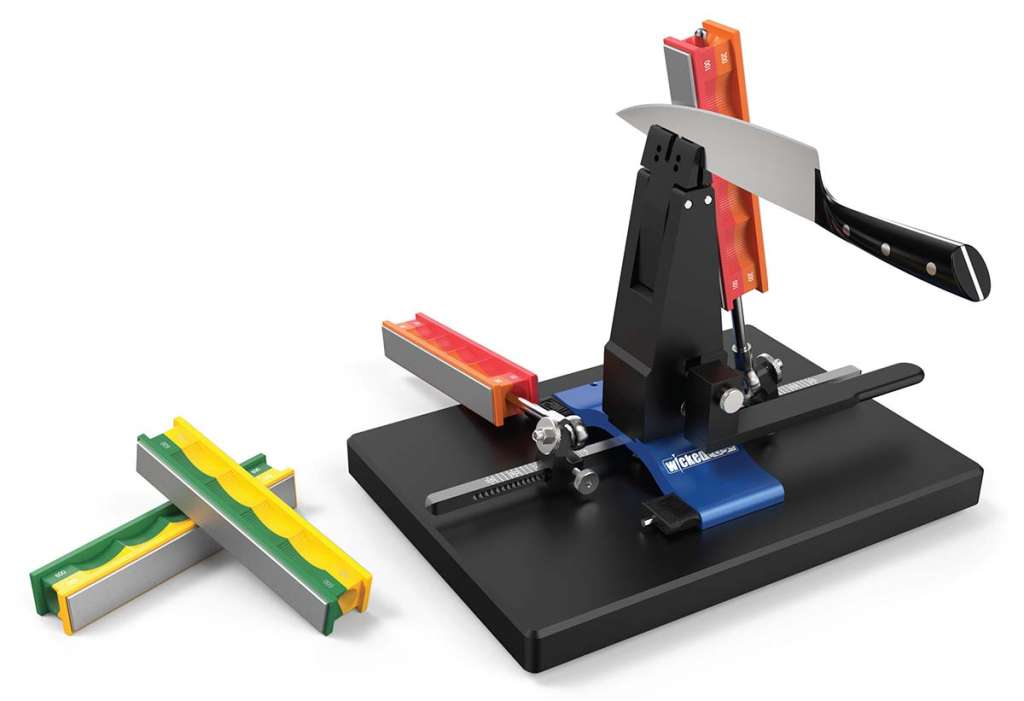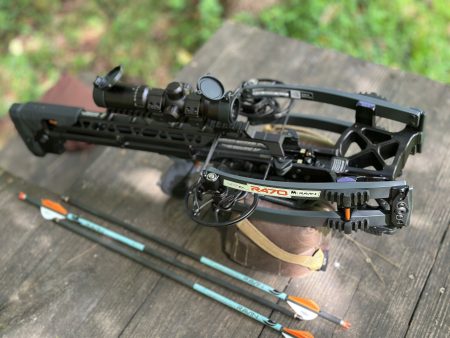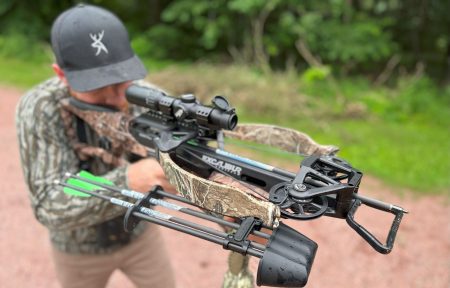Most archaeological experts agree that the first cutting tools were likely made over three million years ago as bones from that period began to show evidence of cuts, scrapes, and gouges that were different from the normal damage seen from predatory animals. These cutting tools began as pieces of stone that were crudely shaped and slowly evolved to knapped flints that were finely crafted and capable of serious work. It wasn’t until the copper, bronze, and iron age that cutting tools took their next serious leaps when our ancestors developed the means to sepa- rate metals from ore and eventually combine them into various alloys. Today, cutting tools are made from many types of alloys designed for different types of work.
For present-day hunters, just as they were for the hunters of millions of years ago, knives are one of the most important tools we carry into the field, other than our weapons. Hunters have at their disposal an almost limitless number of design options constructed of various types of metals. Regardless of what de- sign you choose, knives are of little use unless they have a keen edge. If you are anything like me, I have always struggled with honing my knives to that razor-sharp edge that we all desire.
Not only is a sharp edge more useful, but it is also safer for the user. I view knife sharpening as an art, and I admire those that can consistently achieve fine edges on their cutting tools. Seeing what a master knife sharpener can accomplish by hand when working a steel edge over a whetstone is a skill set that I simply do not possess, and I readily admit it.
Many folks like me have come to rely on the various knife sharp- ening devices on the market. Most are designed to maintain a consistent angle while the user draws the edge through the sharpener. There is no doubt that these work as I can get a relatively good edge rather quickly. The edges that I can achieve are consistently better than any attempt I have ever made on a sharpening stone. With that said, I rarely get an edge that can easily slice through copying paper or approximate that of a razor blade. Since I am always looking for something better, one product recently caught my eye. When I first saw the knife sharpeners from Wicked Edge, my first inclination was to ask my- self if I needed something that elaborate to simply sharpen my knives. As I thought about it more and considered how much I use my knives, it started to make much more sense to me that if this sharpener provides that razor’s edge that I am seeking every time, why not give the Wicked Edge a shot. After contact- ing them to discuss my needs as a sportsman, I decided on the WE130 sharpener with a few accessories.
Wicked Edge Sharpeners are manufactured with the highest quality materials and are designed with the intent to turn every- body into a master knife sharpener with minimal skill required. The standard WE130 kit comes with their new generation 3 vise, guide rods, two coarse 100 grit, two medium-coarse 200 grit, two medium 400 grit, and two fine 600 grit diamond stones.
This kit also includes a nicely put-together instruction manual that not only details how to assemble and use the WE130 but also explains the anatomy of a knife and has sharpening logs in the back to write down all of the angles and other details of each knife you sharpen for future reference. In addition to the standard WE130 kit, Wicked Edge also sent me their solid aluminum mounting base, and a set of their 800 and 1000 grit extra-fine diamond stones. My kit arrived in solid packaging with everything inside firmly held in place within a molded plastic clamshell. With precision being important with a tool such as this, the packaging is important and I would expect that shipping damage is very unlikely to occur. After removing every- thing from the packaging and verifying that all of the parts were inside, I looked through the instruction manual and began the assembly process. This took just a few minutes, and the WE130 was ready to go. Wicked Edge neatly incorporates a small Allen wrench and a depth guide needed to operate the sharpener into the base assembly so that they are available at an instant when adjustments are required.
My first order of business was setting out to break in the diamond stones on older blades as Wicked Edge suggests for optimum performance on your best knives. I grabbed one of my older hunting knives and followed the instructions to use a marker of some sort to color the cutting edge of the blade. Included in the base is a depth key tool that fits into the jaws of the vise. This key has two different locations for larger and smaller knives. I put the key into the larger knife position and firmly locked the blade into the vise. This ensures that the blade is perfectly level and is seated at the same depth in the vise every time the blade is sharpened. There is also a tension lever to accommodate various blade thicknesses. If you follow the instructions, the union between the blade and the vise is rock solid. From that point, the guide rods on the angle bar are adjusted to approximate the angle of the bevel on the cutting edge of the knife. This angle bar has small indents that mate with the thumbscrew at every degree. I selected 25 degrees on both angle guides and made a few passes with the 100 grit diamond stone. After a few passes, as instructed, I inspected the cutting edge to see where the stone removed the marker coloring from the edge. Mine was pretty close so I elected to keep the 25-degree angle. If you find that you want an angle of say 25.5 degrees, the Wicked Edge WE130 has a built-in micro-adjust on the guide rods to achieve that. You also want to inspect the length of the blade to make sure that an equal amount of color was removed from the cutting edge. If it was heavier towards the heel or the tip, the knife should be moved back or forth in the vise to get a consistent sweep of the stones across the blade. Wicked Edge includes a measuring guide to measure the placement of the blade in the vise to record it in the log at the back of the instruction manual. Once the knife is properly set up, it is a simple matter of running the diamond stones across the blade as you work through the decreasing abrasiveness. It is important to create a burr on one side of the blade before beginning work on the other with each progres- sive stone. After that burr is achieved on each side, you can then alternate side to side in sweeping motions as you hone the edge.
After working through the medium grit stones, the blade on my very old and very rough knife was feeling extremely sharp. With each progressive stone, the blade was turning into a razor before my eyes. After finishing up with the 1000 grit stone, I recorded all of my settings in the log and anxiously removed my knife from the vise. It shaved the hair on my arm easily and cut through copying paper at will. Determined to find the ultimate test, I dug through my wife’s pile of sales receipts and found one where you could almost see through the paper because it was so thin. When I ran the blade across the edge of the receipt, it cut cleanly through to the tip. I was impressed, to say the least. This was done using stones that Wicked Edge said needed to be broken in. All of my attention then turned into breeding new life into all of my old knives. From there I turned to my current hunting and fishing knives along with all of the knives in my kitchen. After sharpening over two dozen knives with the Wicked Edge WE130, I can honestly say that I don’t know how someone could get a blade sharper. I have even used it on some of my shop tools. As I use the sharpener more, the edges are getting even keener as the stones break in with each use. The WE130 is foolproof for even the novice knife sharpener.
While the WE130 is primarily designed for knives, it can be used on some of the larger two-bladed broadheads on the market. Replaceable blades are more of a challenge as they have to have enough depth for the stones to clear the jaws of the vise. Any blade that is 1 inch or longer can be clamped into the Wicked Edge generation 3 vise. As I said at the begin- ning of this review, other than the weapons we use, perhaps no other tool is as important as a sharp knife at the end of the day to clean and process the game we take. While the Wicked Edge WE130 is not inexpensive, this investment will create and maintain professional quality edges on all of your knives for the entirety of your hunting lifetime. Because of the repeatability of the device, touching up the blades is a quick and simple task that generally requires only the use of finer grit stones. If you are looking for the ultimate knife sharpener or maybe are just tired of mediocre edges on your blades, look no further than the sharpeners from Wicked Edge. You can visit them online at www.wickededgeusa.com to view all of their products and watch their instructional videos to see the WE130 in action. As I enter the upcoming hunting season, my packs will be filled with knives that are wicked sharp thanks to Wicked Edge.
Per our affiliate disclosure, we may earn revenue from the products available on this page. To learn more about how we test gear, click here.






